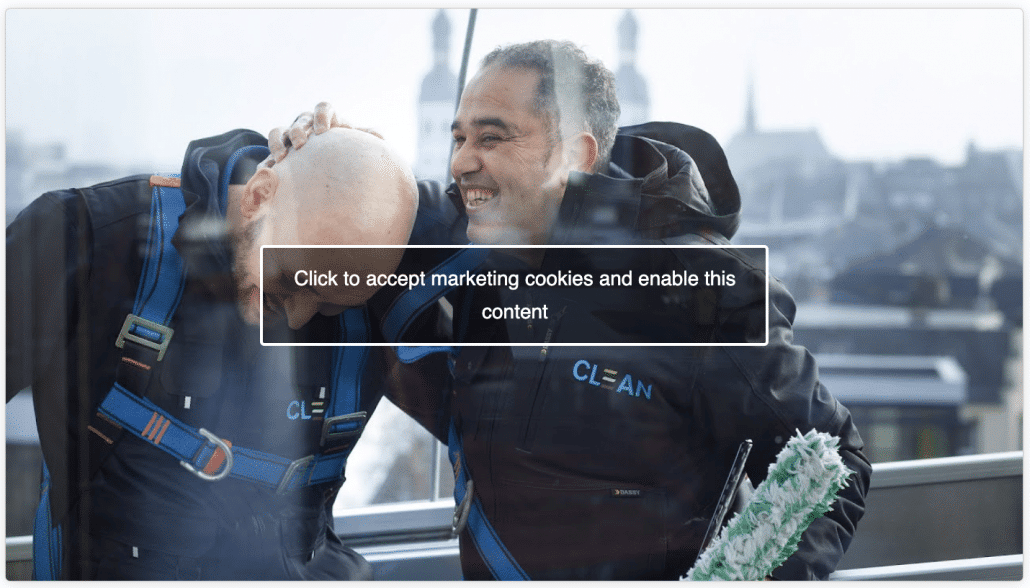Complianz downloads YouTube thumbnails and uses them to create a beautiful placeholder, used to ask visitors’ consent. The image used to create your placeholder is stored on your webserver, and loaded along with the rest of the page.

A YouTube placeholder, created with Complianz.
Complianz users have asked us whether this complies with the YouTube Terms of Service (found here). Specifically, users have expressed their concerns about this part:
You are not allowed to:
1. access, reproduce, download, distribute, transmit, broadcast, display, sell, license, alter, modify or otherwise use any part of the Service or any Content except: (a) as expressly authorized by the Service; or (b) with prior written permission from YouTube and, if applicable, the respective rights holders;
The intention of this section of the Terms of Service is to protect Copyrights of the creator of the content. It prevents people from downloading content from YouTube, with the intention to use it outside of YouTube.
Exceptions to copyright infringement
Copyright legislation differs across the world. Youtube is established in the United States, where the “Fair Use Exception to Copyright” applies. Federal legislation determines four factors that should be taken into consideration to determine fair use:
1. Purpose and character of the use, including whether the use is of a commercial nature or is for nonprofit educational purposes.
The purpose, in this case, is to ask site visitors their consent for YouTube’s marketing cookies. The purpose is not commercial, but to comply to privacy legislation. The thumbnail enables end-users to view the YouTube video within legal compliance.
2. Nature of the copyrighted work
Books are less likely to fall under the exception than news articles, or YouTube thumbnails.
3. Amount and substantiality of the portion used in relation to the copyrighted work as a whole
When we consider the entire video as the copyrighted work, only the thumbnail (a screenshot) is used.
4. Effect of the use upon the potential market for or value of the copyrighted work
There is no negative commercial effect for the copyright holder or YouTube. On the contrary: the image is stored locally for performance purposes and it enables Complianz users (the website owner) to embed Youtube videos on the site, as consent for non-functional cookies must be asked.
Conclusion
We believe that the fair use exception can be applied safely. Also in other regions than the US, exceptions can be applied such as the right of citation. On top of this, one might ask if any Youtube publisher would ever see harm in their thumbnail being downloaded locally, instead of being loaded directly via the Youtube API.
Ultimately the responsibility remains with the website owner. If you don’t wish to use the YouTube thumbnails as placeholders, you can either create your custom placeholder or disable the YouTube placeholder via Complianz -> Integrations -> Services -> YouTube.
